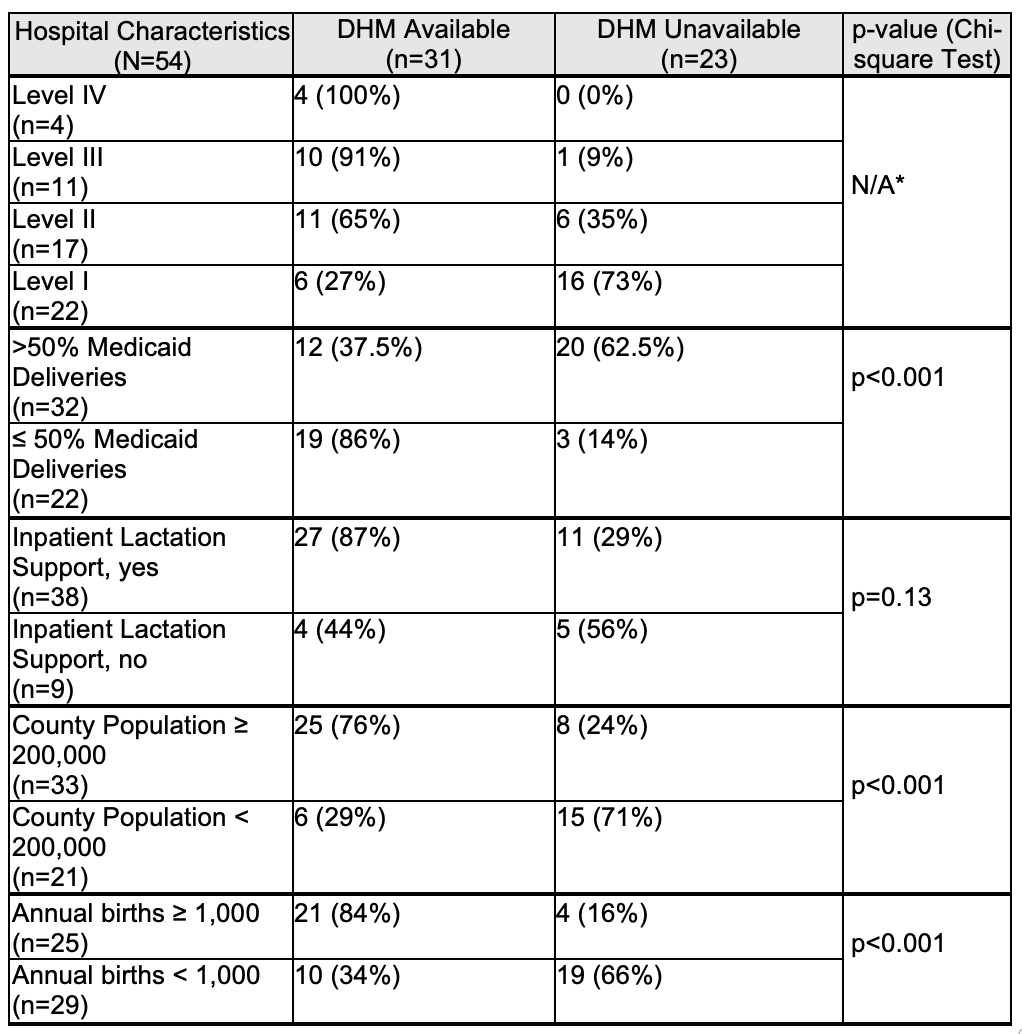Breastfeeding/Human Milk
Session: Breastfeeding/Human Milk 2: Human Milk Feeding
484 - Disparities and Drivers of Donor Human Milk Access in Washington State Prior to State Law Implementation
Sunday, May 5, 2024
3:30 PM - 6:00 PM ET
Poster Number: 484
Publication Number: 484.1872
Publication Number: 484.1872

Rachel N. LaFontaine, MD (she/her/hers)
Pediatrics Resident
University of Washington School of Medicine
Seattle, Washington, United States
Presenting Author(s)
Background: Healthcare disparities in early childhood have life-long impacts. Exclusive human milk is associated with reduced newborn mortality and improved maternal-child health outcomes. When parents’ own milk is unavailable, donor human milk (DHM) is preferred. DHM is associated with reduced risk of necrotizing enterocolitis and death in preterm infants and improves rates of exclusive breastfeeding (EBF) at discharge. Many U.S. states are passing legislation to optimize DHM access. In Washington state (WA), Senate Bill (SB) 5702 passed in 2022, requiring select insurers to cover DHM when medically indicated.
Objective: We sought to assess baseline DHM availability and hospital characteristics associated with DHM across WA birthing hospitals prior to implementation of SB 5702.
Design/Methods: As 96% of births occur in-hospital in WA, we focused on hospital births. We identified 55 birthing hospitals in WA. A military hospital was excluded due to lack of data. A survey was created in collaboration with WA Perinatal Collaborative asking about access to DHM and lactation support. Survey responses were collected in REDCap with hospital and county data were obtained from public sources. Descriptive statistics were used to characterize DHM access and associated hospital characteristics.
Results: 54 (100%) hospitals responded to the survey question on DHM access and 89% completed the entire survey. Thirty-one (57%) birthing hospitals had access to DHM. There is variation in DHM access geographically in WA (Figure 1). Hospitals with higher neonatal care had access to DHM more frequently (p=0.0014) (Table 1). Among hospitals with ≤50% Medicaid-funded births, 19/22 (86%) had access to DHM compared to 12/32 (37.5%) with DHM access among hospitals with >50% Medicaid-funded births (p=0.0004) (Table 1). Hospitals located in more populous counties and hospitals with higher number of annual births more frequently had access to DHM (more populous 76% vs. 29% less populous; 84% higher annual births vs 24% less annual births; p=0.0006 and p=0.0002, respectively) (Table 1). There was no significant relationship between DHM availability and presence of inpatient lactation support (p=0.1298) (Table 1).
Conclusion(s): While >50% of WA birthing hospitals have DHM, access is inequitable. DHM access was more likely in hospitals with higher neonatal care level, location in a more populous county, higher annual births, and lower proportion of Medicaid-funded births. Future efforts should be focused on improving equitable access to DHM to reduce disparities for this evidence-based, life-saving intervention.
.jpg)

